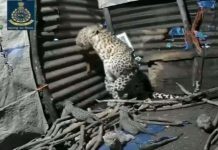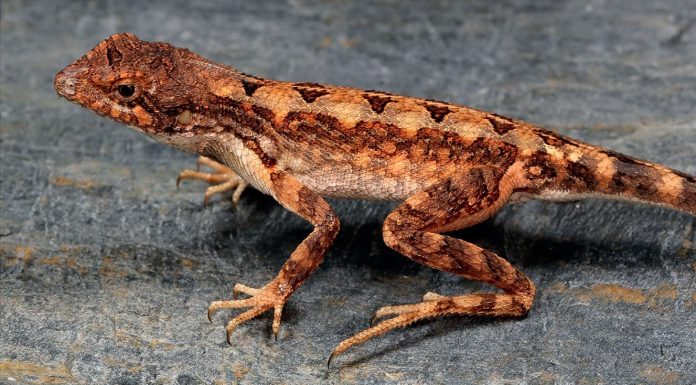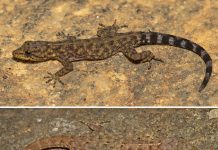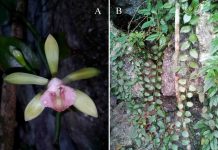Three Indian researchers have discovered a new species of fan-throated lizard of the genus Sitana from northern Karnataka, India. According to the research findings, new species is similar to members of the clade of Sitana spinaecephalus. However, can be distinguished based on morphological as well as molecular data. Sitana dharwarensis sp. nov. differs from its sister species, S. laticeps in bearing a much larger dewlap.
Sitana dharwarensis sp. nov. is a large-sized species in relation to members of the Sitana spinaecephalus clade, males reaching SVL of 52 mm. Dewlap large, coloration in breeding males cream to off-white, extending up to 47% of the trunk. Parietal bone with a subtle indentation on the anterior border, maxillary bone short in its length and covers a smaller area of the snout, squamosal long and slender gradually tapering at both ends in a sharp tip and, quadrate robust and stout.
Sitana dharwarensis sp. nov. differs from most known species within the genera Sitana and Sarada in bearing a white colored moderately large dewlap. The new species is similar to S. laticeps and S. spinaecephalus in sharing a white dewlap. It differs from S. laticeps in bearing a much larger dewlap, dewlap extending to about 47% of the trunk (vs. 29% in S. laticeps, 45% in S. spinaecephalus). Sitana dharwarensis sp. nov. further differs from S. laticeps in bearing a subtle indentation on the anterior border of parietal
Members of the genus Sitana Cuvier, 1829 have received considerable attention from the view of systematics, evident from the recent surge in species descriptions in the last five years. The genus currently contains eleven species, however, a recent molecular investigation hints at the presence of additional undescribed species.
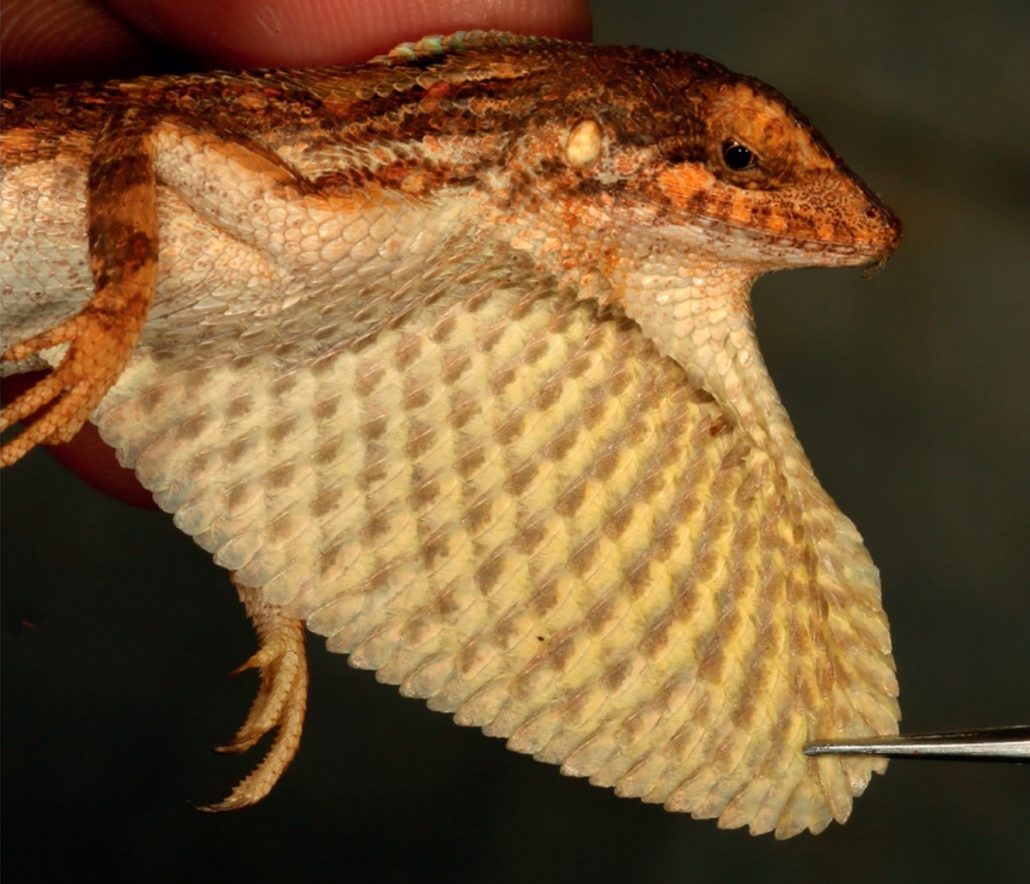
The researches said in the study, “we collected specimens of Sitana, which resembled S. laticeps based on the dewlap coloration during the course of a herpetological investigation trip to northern Karnataka, a state in south India. Molecular data for a specimen was generated which shows that the specimen was genetically related to S. laticeps, however, it differed in several aspects with regard to its morphology.”
Recent studies provided that, the number of Sitana species in the subcontinent will certainly rise. Morphologically cryptic species currently considered conspecific with broadly distributed species, a common case with most lizard species recorded from India represents a major subset of the reptilian diversity of the country, and hence dedicated efforts must be made to document and describe these. Many of these newly described species occur outside of protected areas and in most localities, local populations are at risk from being wiped out. A management plan for non-protected area, especially open and scrublands that are otherwise termed wasteland and considered less biodiverse must be devised to ensure the protection of species and habitats.
If you are interested to read more on this research, you can find the full research article in here
Cover Photo – Mayuresh Ambekar, Arya Murthy & Zeeshan A. Mirza









